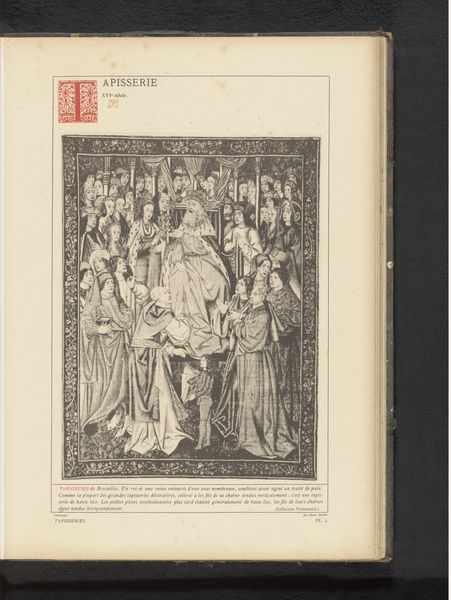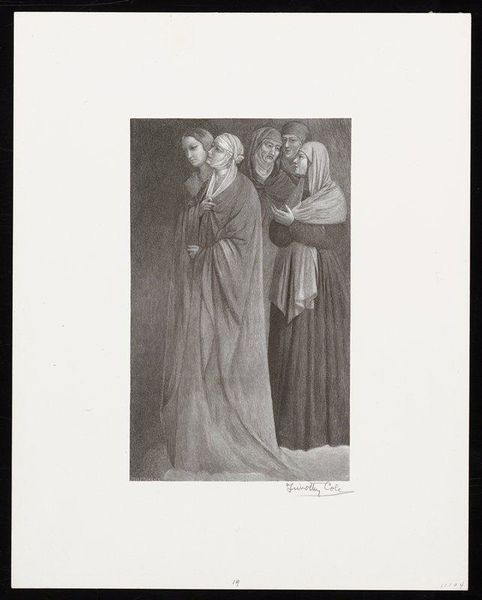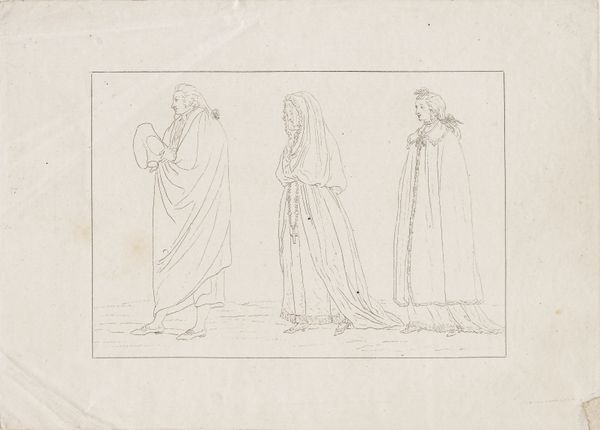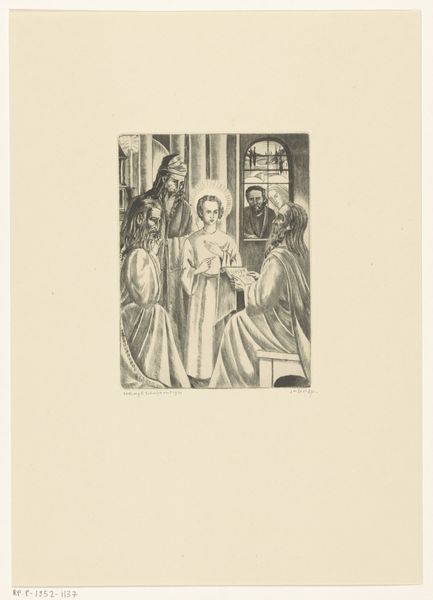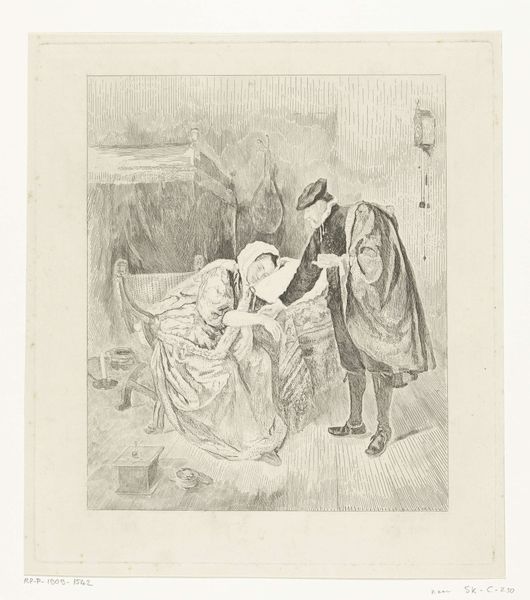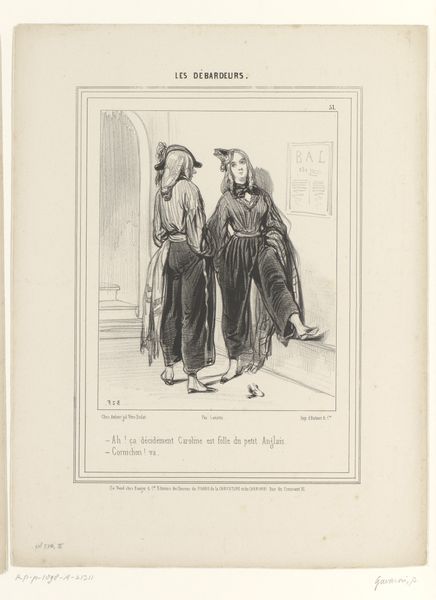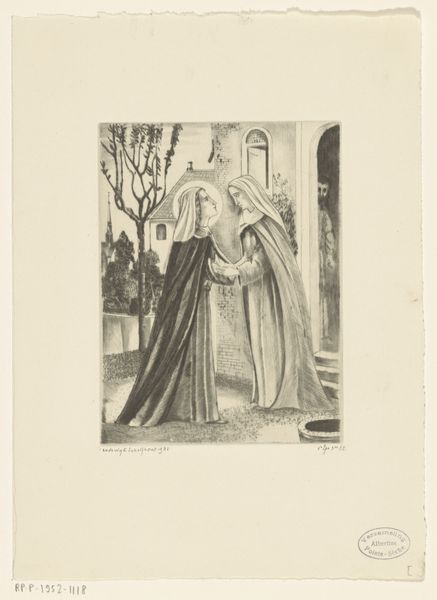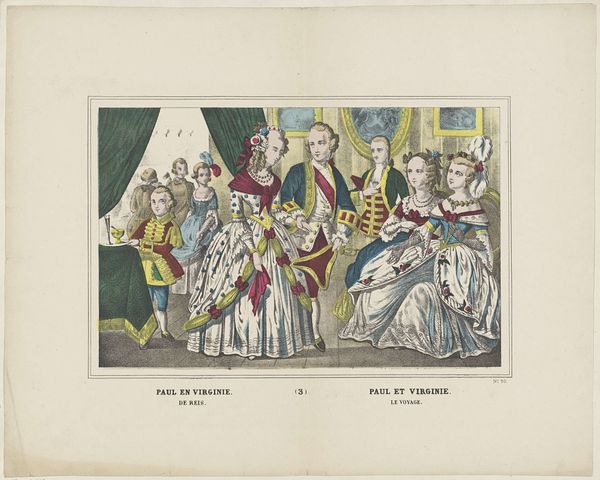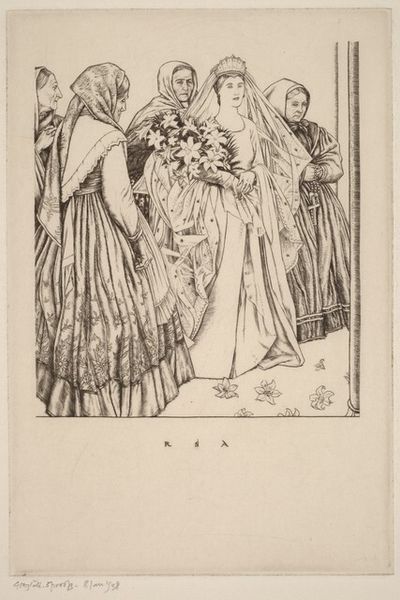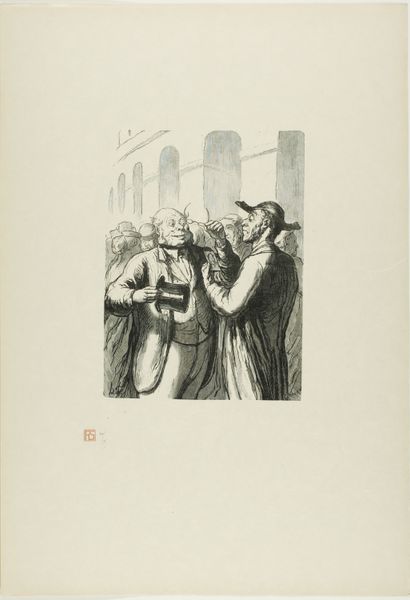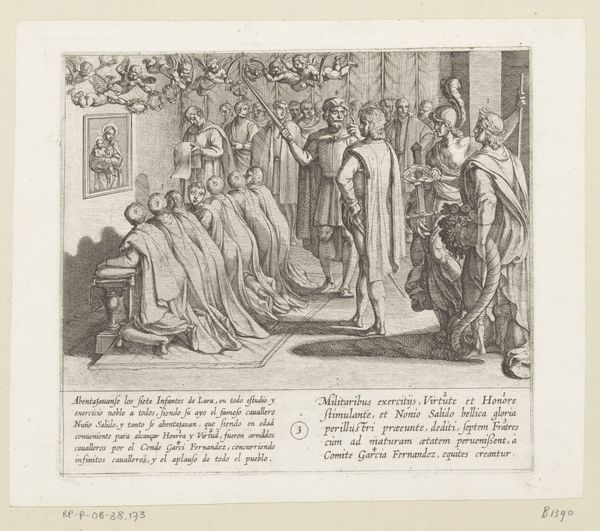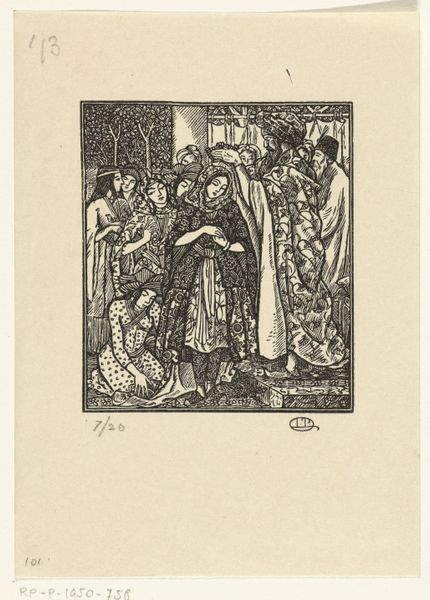
Art - Goût - Beauté, Feuillets de l' élégance féminine, Novembre 1931, No. 135, 12e Année, p. 11 1931
0:00
0:00
drawing, print
#
portrait
#
art-deco
#
drawing
# print
#
historical fashion
#
genre-painting
Dimensions: height 315 mm, width 240 mm
Copyright: Rijks Museum: Open Domain
Curator: This elegant image comes from the November 1931 issue of "Art - Goût - Beauté, Feuillets de l'élégance féminine," a print showcasing the height of Art Deco fashion. Look at the rendering; it’s credited to R. Drivon. Editor: Oh, the textures! It's like stepping into a luxurious, almost cinematic dream. The fabrics appear to ripple, and those furs – so opulent. The artist truly captures the sensuality of the period. Curator: Exactly! It speaks volumes about the interwar period. Consider the role fashion magazines played; they were tools of aspirational consumerism and societal change, democratizing trends but also reinforcing hierarchies of taste and class. Editor: It’s the strategic interplay of materials that really captivates. The sleek lines of the dresses juxtaposed with the fur…you can almost feel the difference in weight, in cost. And the print itself—how do you think they achieved those layered effects? Curator: That era saw innovations in printing techniques. Pochoir was popular, allowing for vivid color through stencils. Analyzing these magazines shows how artistry merged with industrial reproduction, shaping perceptions of beauty for mass audiences. What was deemed desirable was strategically produced. Editor: That layering reveals the constructed nature of "elegance" – the careful curation of materials, forms, and, implicitly, social positions. It’s fascinating how fashion, in its production and consumption, becomes such a potent marker of identity and aspiration. The gaze, too, plays a role; these figures present themselves, crafted for observation. Curator: Precisely. By studying these prints, we uncover not only clothing styles but also the societal structures, marketing strategies, and manufacturing processes that shaped the early 20th-century fashion industry and culture. The Art Deco lines are indicative of streamlining and progress that was interrupted by war. Editor: Yes, and for me, understanding the materials and production invites critical engagement. It highlights how fashion operates as a tangible intersection of artistry, industry, and desire. Curator: I see fashion publications such as this as more than just glossy images; they serve as time capsules, embodying an era’s spirit. They reveal the socio-economic forces at play in defining the aesthetics of the time. Editor: A very material point of view. Well, after our chat, I am left reflecting on the enduring power of fashion to both reflect and construct our world.
Comments
No comments
Be the first to comment and join the conversation on the ultimate creative platform.
